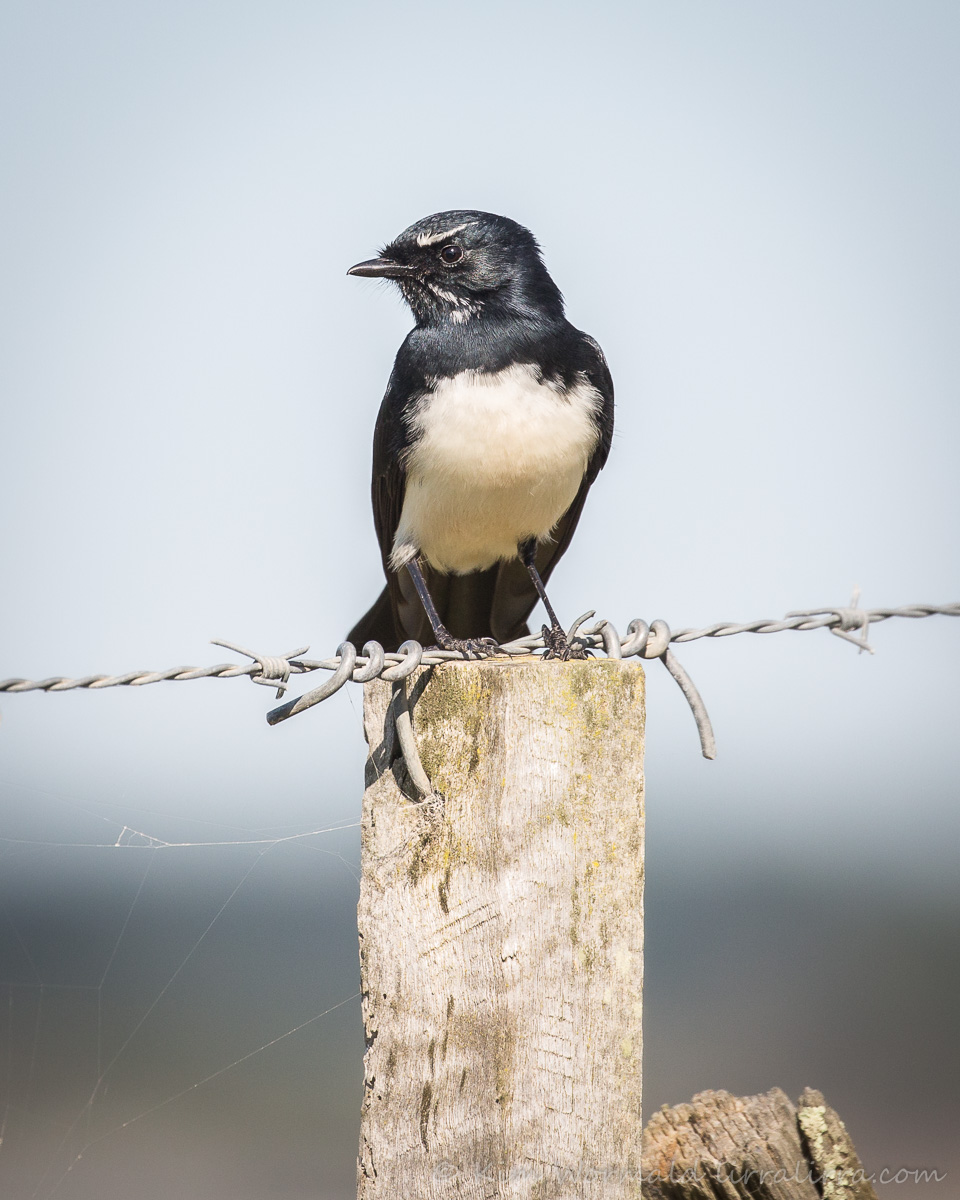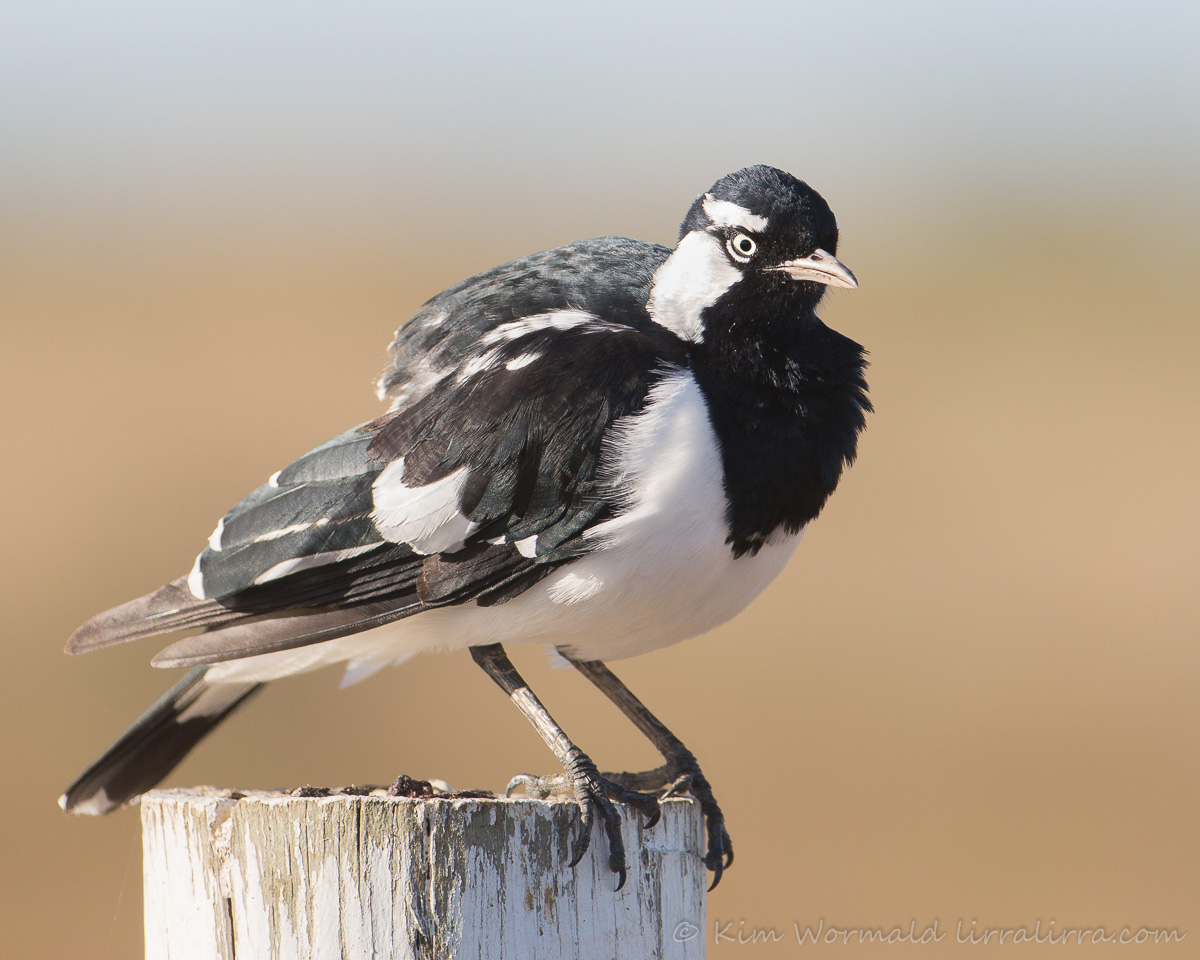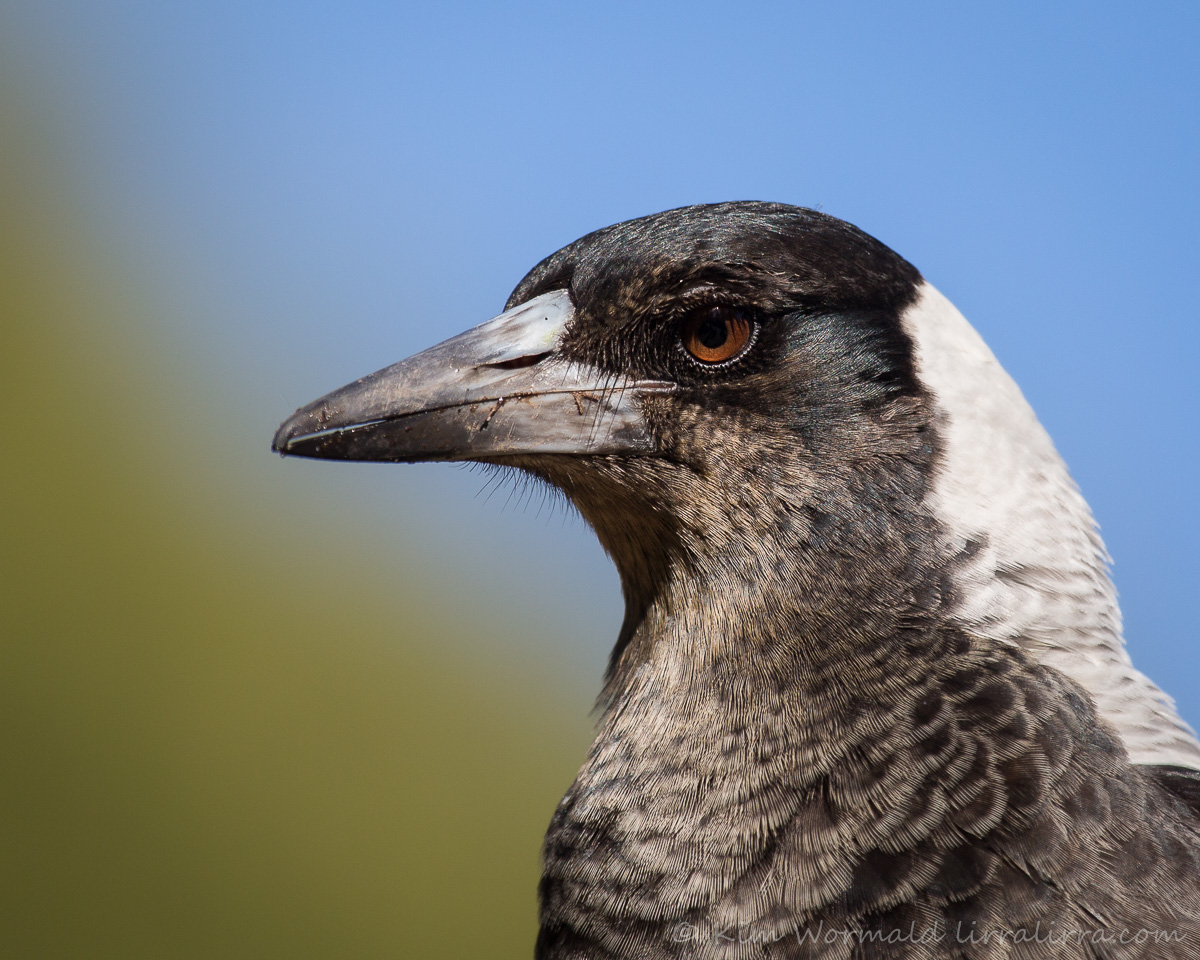Black and white birds can be difficult to photograph, like weddings where detail in the blacks and whites can be lost if the images aren’t perfectly exposed .
 Willie Wagtail (Rhipidura leucophrys)
Willie Wagtail (Rhipidura leucophrys)
1/1600, f6.3, ISO 800
Willie Wagtails are the largest of the fantails and are found throughout mainland Australia where they are well-known for their active hunts for insects and their variety of sweet calls and scolding chatter. They measure about 20cm and weigh about 20 grams which is about 5cm longer and just over double the weight of a Grey Fantail. The background in this image is a dry cattle paddock and overcast sky.
 Magpie-lark (Grallina cyanoleuca) – male
Magpie-lark (Grallina cyanoleuca) – male
1/1000, f5.6, ISO 400
This Magpie-lark sat on the fence post for a while, fluffing his feathers in the gentle breeze. Males have a black face and a white eyebrow, females have a white face and no white eyebrow. Magpie-larks are not magpies or larks, they are found across Australia but only rarely visit Tasmania. They are about 28cm in length and weigh about 90g which makes them considerably larger than Willie Wagtails and considerably smaller than Australian Magpies. Magpie-larks are also known as Mud-larks and Peewees. The background in the image above is native grasslands.
 Australian Magpie (Cracticus tibicen)
Australian Magpie (Cracticus tibicen)
1/800, f5.6, ISO 200
Australian Magpies are found across Australia, including Tasmania. They are well-known in parks and gardens where grass is mown and they can readily probe for insects and worms on the ground. They are about 40cm in length and weigh up to about 350g. Male magpies occasionally swoop during the breeding season if they believe their nest is being threatened.
I have never photographed a wedding, I don’t think I’d like the responsibility or pressure, and besides I might find myself wandering off into the bushes after a fantail or whistler.
Happy birding, Kim
~ Thank you for your visit and comments.
~ If you’d like to receive a weekly email informing you that lirralirra has been updated please join the growing list of subscribers and add your email address to the ‘subscribe’ box above right.

Bon jour,
Un très joli site photographique et de très belles photos, je viens de passer un beau moment à admirer.
Je m’inscris à la news, je reviendrai…
Belle fin de journée
Bon jour Pacale, thank you for your kind comment. I’m pleased you enjoyed your visit and have subscribed. Welcome!
Just beautiful, Kim. Always enjoy seeing Rikky-Tikky-Tik’s defiant white eyebrow! Will ring to pick your brains re a Wedgie(?)at North Wandin and its local depredations. (Suspect it to be a Brown Goshawk.)
“Rikky-Tikky-Tik” has made me think of that children’s story about Tikki tikki tembo no sa rembo chari bari buchi pip peri pembo … or something like that! I look forward to hearing from you about the goshawk.
Well miss you did GREAT with your black and white subjects – much better than I manage. I really love the wagtail – kind of reminds me of a swallow here, the magpie lark is interesting – neither a magpie or lark – don’t you wonder sometimes how they get those names? Our magpie here is also black and white but looks nothing like yours. Interesting…..
Our magpie here is also black and white but looks nothing like yours. Interesting…..
I always find it interesting to hear about your birds Sherry, you often have me googling different species and learning new things.
Aw these are gorgeous! Beautiful shots.
I thought you might add something like ‘speaking of fence sitters – please write to the pollies about banning duck shooting’ hahaha
What a funny thought! I’ve always thought fence-sitting would be pretty uncomfortable.
Wonderful photos, as always.
Thank you Susan, I’m glad you enjoyed them
Black and white. And beautiful.
The Magpie and the Magpie Lark are both regular visitors here. As is the Pied Currawong – also hard to photograph well. And the magpie warble spells home to me.
I love your focus on these ‘common’ birds. Thank you.
And weddings? I would much, much rather look at birds.
I had meant to mention the magpie warble, it is magical. Garden weddings combine the best of two worlds
Kim, do you overexpose by a certain amount to get the detail in the black. Nice sharp images. I find the male Satin Bowerbird even harder to get it right.
That’s the usual plan Paul, exposing a little to the right helps. The male Satin Bowerbird would be fantastic to get right, which I’m sure you have!
very sharp, nice work kim
Thank you Glenn!